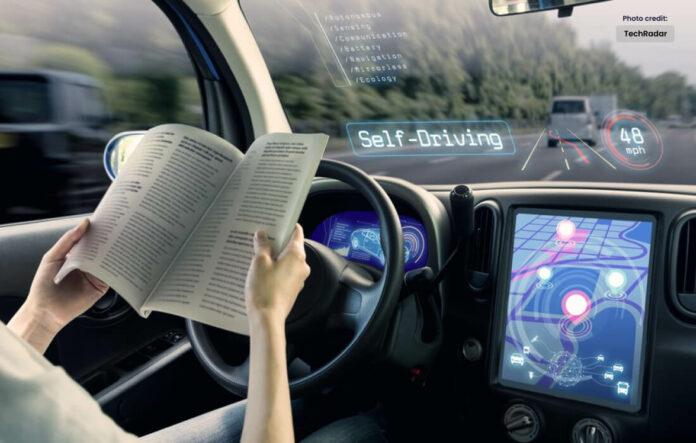Explore the revolutionary advancements in self-driving cars
Quick Summary:
Self-driving cars, also known as autonomous vehicles, use advanced technology like sensors, cameras, and AI algorithms to navigate and drive without human intervention. They have the potential to revolutionize transportation by making it safer and more efficient. These cars can detect obstacles, follow traffic rules, and communicate with other vehicles. Companies like Tesla, Waymo, and Uber are actively working on developing self-driving car technology. The future of self-driving cars holds promise for improved road safety and convenience. It’s an exciting field that continues to evolve and shape our world!
Introduction:
In the fast-paced realm of technological innovation, few concepts have captured the collective imagination quite like self-driving cars. Once relegated to the realms of science fiction, autonomous vehicles are now a tangible reality, poised to transform the way we move and live. This blog delves into the fascinating world of autonomous vehicles, examining the technology driving their development, the promises they hold, and the challenges that lie ahead.
The Technological Backbone: How Do Self-Driving Cars Work?
At the core of self-driving cars lies a symphony of cutting-edge technologies, including artificial intelligence (AI), machine learning, and advanced sensor systems. These vehicles rely on a complex network of sensors, cameras, radar, and lidar to perceive and understand their surroundings. AI algorithms then process this wealth of information in real-time, enabling the vehicle to make split-second decisions about navigation, obstacle avoidance, and traffic management.
Advancements in Safety and Efficiency
One of the primary promises of autonomous vehicle is an unprecedented improvement in road safety. With human error accounting for the majority of accidents, autonomous vehicles aim to eliminate this variable, potentially saving countless lives. These vehicles are programmed to adhere strictly to traffic laws and regulations, and their ability to communicate with each other can result in smoother traffic flow and reduced congestion.
Additionally, self-driving cars have the potential to revolutionize transportation for individuals with limited mobility. Elderly individuals and those with disabilities could gain newfound independence, with self-driving cars providing a reliable means of transportation.
Challenges on the Horizon
While the vision of a world filled with autonomous vehicles is enticing, significant challenges remain. Technical hurdles, such as the ability to navigate complex urban environments and unpredictable weather conditions, are ongoing concerns. Moreover, questions surrounding ethical decision-making, liability in the event of accidents, and the potential impact on employment in the transportation sector must be addressed.
The Societal Impact: Beyond the Steering Wheel
The advent of autonomous vehicles extends beyond the realm of transportation. It holds the potential to reshape urban planning, as reduced traffic congestion and the need for vast parking spaces could transform city landscapes. The concept of car ownership might evolve, with a shift towards on-demand autonomous ride-sharing services. These changes could have far-reaching implications for the automotive industry, insurance, and various other sectors.
Looking Ahead: The Road to Full Autonomy
As we navigate the complex road to fully autonomous vehicles, the development of self-driving cars continues to accelerate. Major players in the automotive and tech industries are investing heavily in research and development, pushing the boundaries of what’s possible. The promise of a future where cars navigate the roads seamlessly, improving safety, efficiency, and accessibility, is inching closer to reality.
In conclusion, self-driving cars represent a thrilling frontier in the evolution of transportation. While challenges persist, the potential benefits—improved safety, enhanced mobility, and societal transformation—are too compelling to ignore. As we steer towards this autonomous future, the journey promises to be as exhilarating as the destination.




